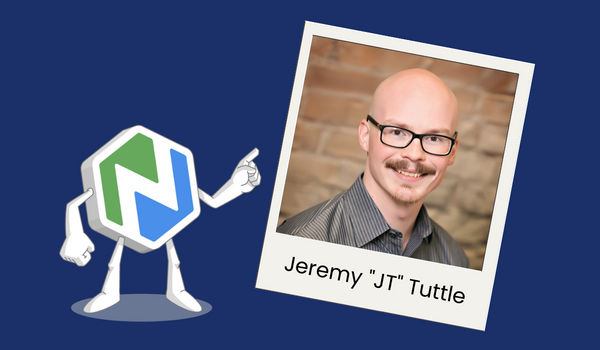Here at Niche Academy, we strive to help people solve big problems together—and each member of our team plays a vital role in meeting our goals. Today we’d like to introduce you to Jeremy “JT” Tuttle, who fearlessly leads our Learning Design team in creating outstanding learning content. JT was kind enough to answer a few questions and share some insights about what he does.
Why did you join Niche Academy?
It's a kismet story, really. I was looking for a side hustle while working for my previous employer. One of my coworkers said Niche Academy was looking for a tutorial writer on a contract basis. I started the contract and immediately knew Niche Academy was where I wanted to work. After about eight months of contract work, I was brought on full-time.
What do you do at Niche Academy?
I'm the Director of Learning Design, so I lead a wonderfully creative and intelligent team in the development of the Niche Academy-produced tutorials. I spend most of my time fulfilling a project management role, keeping various projects moving through the tutorial production process.
Niche Academy employees are located all over the country. Tell us a bit about where you live and work.
Right now, I live in Sandy, Utah, about 25 minutes away from Niche Academy HQ. It's a great area where I have access to a massive regional park, ideal for walking the dog and getting out into nature. The majority of the learning design team is remote, so I work remotely as well.
Tell us a little bit about how you create tutorials.
We create a guiding document at the start of the tutorial creation process. When we are done researching a topic, we write down all the important details and develop a structure for the best and easiest way to learn the information. We also identify who the tutorial is for (parents, children, seasoned professionals, organizational leaders, etc.), and keep them in mind while writing the content.
Why is the guiding document so important?
A guiding document serves as a map. If we don't know where we want the tutorial learners to go, we can't help them get there. The guiding document process also helps us slow down and think about what information is critical and what is nice to have. If something isn't critical to solving the issue, does it really need to be included? Why? Some people are surprised by how much training information is just filler, getting in the way of what the learners need to learn, and the guiding document process helps reduce those kinds of barriers.
What is the best feature of the NA platform, in your opinion?
Have you ever gone through training where you knew everything already? Wouldn't it be great to just skip the parts you already know? Luckily for you, tucked away in the options for a knowledge check, there's the "Skip to next knowledge check or end of sequence if the learner answers all questions correctly" setting. This pre-assessment is a fantastic and subtle way to help the people in your organization who already have lots of experience. By using this setting, you can automatically fast-track the people who prove they're experts in a topic. And the people who don't know the information will still see everything they need to learn. Everyone wins!
What are you reading right now?
I've been on a short story kick recently. I just finished reading Year's Best Fantasy 5 (a collection of truly imaginative stories from various authors that quickly transport you from one universe to the next). I'm currently reading Fragile Things: Short Fictions and Wonders by Neil Gaiman. I usually read right before bed, and the end of each short story provides a much more natural stopping point in my sleepy brain than chapters for some reason.
Keep in Touch
We hope you enjoyed this peek behind the scenes. If you would like to see more interviews, webinars, and professional development articles, subscribe to our blog so you never miss a post.
